16.10.2021 / 7:04 MESZ
Atlas 5 rocket rolls out to launch pad with NASA’s Lucy asteroid probe

An Atlas 5 rocket emerged from its hangar and rolled to a launch pad at Cape Canaveral Thursday with NASA’s Lucy asteroid probe. The launch of the Lucy spacecraft Saturday will mark the final planetary science mission in the storied history of the Atlas program.
The 188-foot-tall (57.3-meter) Atlas 5 rocket rolled out of United Launch Alliance’s Vertical Integration Facility around 10:30 a.m. EDT (1430 GMT) Thursday. The launcher rode on top of a mobile platform along rail tracks to pad 41 at Cape Canaveral Space Force Station.
In less than an hour, the rocket had completed the 1,800-foot (550-meter) rollout and arrived at the launch mount on pad 41.
Automatic couplers engaged to connect the Atlas 5 to ground systems, setting the stage for final inspections, closeouts and other activities to ready the rocket for an overnight countdown set to begin late Friday night.
The countdown will be timed for blastoff of the Atlas 5 rocket at 5:34 a.m. EDT (0934 GMT) Saturday, the opening of a 75-minute launch window for the Lucy mission.
The latest forecast issued this morning indicates an 90% chance of favorable weather conditions for launch Saturday. The primary weather concern is with cumulus clouds.
Forecasters predict west surface winds of around 6 knots at launch time, with a few clouds at 2,000 feet. The temperature at launch time should be around 74 to 76 degrees Fahrenheit.
If the launch is pushed back to Sunday morning, there is a 50% chance of acceptable weather.
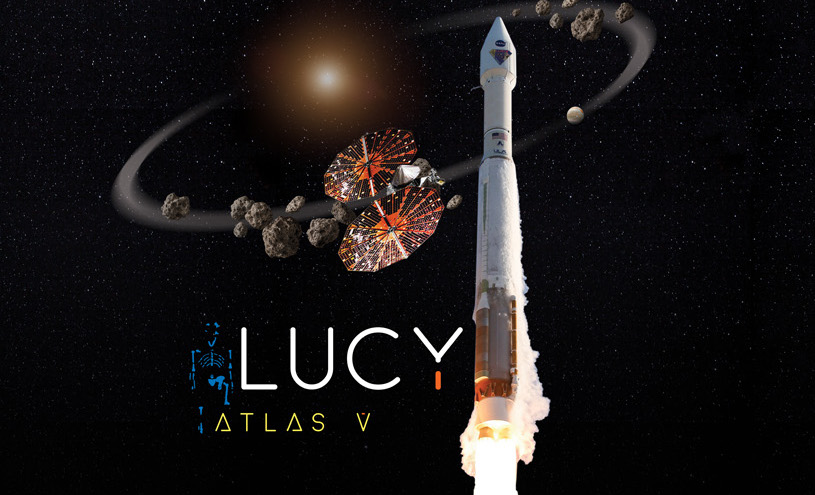
The $981 million mission is the first to target an unexplored group of asteroids known as the Trojans. Scientists think these objects, located in Jupiter’s orbit around the sun, are the primordial leftover buildings blocks from the early history of the 4.5-billion year old solar system.
The robotic spacecraft will fly by seven Trojan asteroids during its 12-year primary mission. On the way out to Jupiter’s orbit, Lucy will briefly encounter another object in the main asteroid belt.
The eight asteroids targeted by Lucy will be a record for a single spacecraft.
Lucy’s instruments will take pictures and measure the composition of each asteroid.
“The Trojan asteroids lead or follow Jupiter in its orbit by about 60 degrees,” said Hal Levison, principal investigator for the Lucy mission from the Southwest Research Institute. “They’re held there by the gravitational effect of Jupiter and the sun, so if you put an object early in the solar system history, it’s been stable forever.
“So these things really are fossils of what planets formed from,” Levison said.
The Trojans are not a uniform population. Scientists have detected more than 7,000 Trojan asteroids in two swarms, and there are many more that remain undiscovered. Some appear more reddish in color, others are more gray.
“If you want to understand what this population is telling us about how the planets formed, you need to understand that diversity, and that’s what Lucy is intended to do,” Levison said.
The rocket set for launch with the Lucy mission is one of 28 Atlas 5s remaining in ULA’s inventory, and the 89th Atlas 5 mission since the rocket’s debut in 2002. ULA is a 50-50 joint venture between Boeing and Lockheed Martin, and is in the final stages of developing a new-generation rocket named the Vulcan Centaur.
The Vulcan will replace ULA’s Atlas and Delta rocket families. There are just three Delta launchers left to fly, all Delta 4-Heavy rockets with top secret payloads for the National Reconnaissance Office.
Most of the 28 Atlas 5 launches left on ULA’s manifest will carry U.S. military payloads, deploy internet satellites for Amazon’s Kuiper network, and launch astronaut missions on Boeing’s Starliner crew capsule. There are three NASA-led missions left on the Atlas 5 launch schedule, including two weather satellites and the Lucy asteroid probe.
That makes Lucy the final solar system exploration mission to launch on an Atlas rocket.
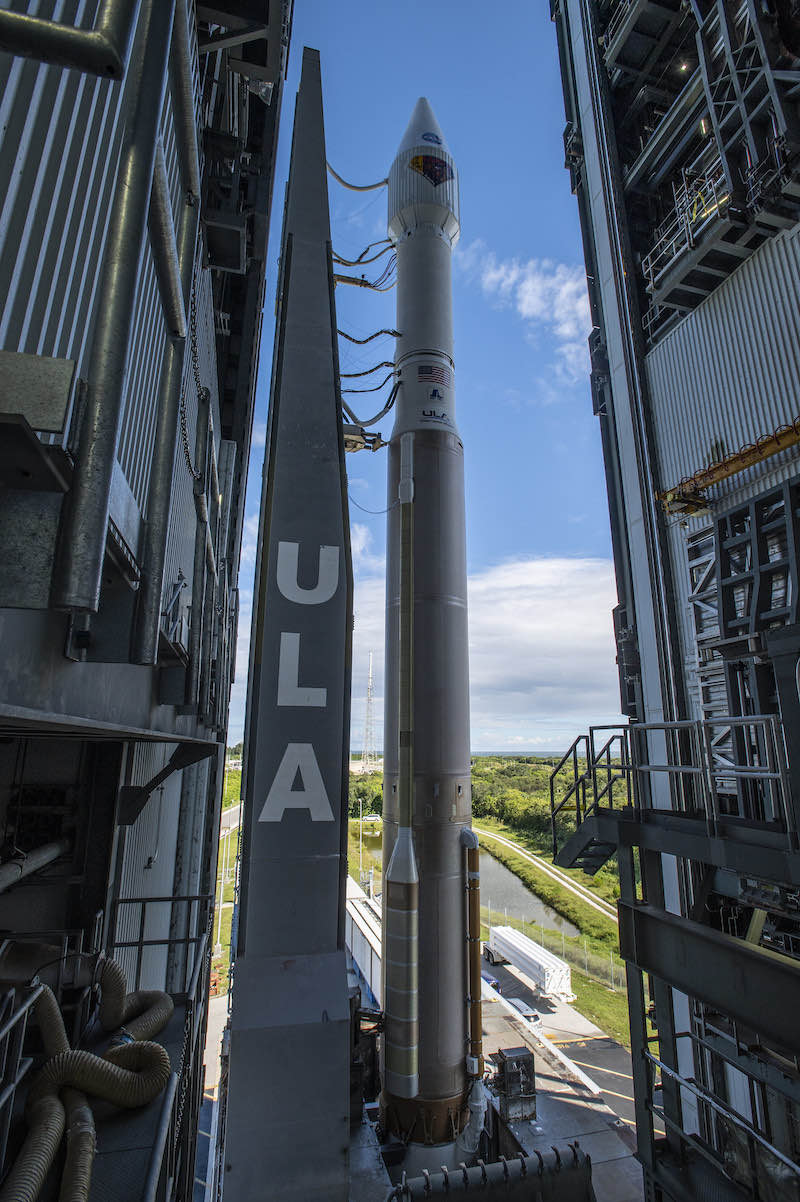
Atlas 5s have launched several famous interplanetary spacecraft, including NASA’s New Horizons probe, which took off on an Atlas 5 rocket in 2006 and captured the first up-close views of Pluto during a historic flyby in July 2015.
NASA’s Curiosity and Perseverance rovers currently driving across Mars also launched on Atlas 5 rockets in 2011 and 2020. Atlas 5 flights also launched NASA’s Mars Reconnaissance Orbiter, the MAVEN orbiter, and the InSight lander to the Red Planet.
Other solar system missions launched on Atlas 5 rockets include NASA’s Juno orbiter, which left Earth for Jupiter in 2011, and the OSIRIS-REx asteroid sample return spacecraft in 2016. The Solar Orbiter mission, a joint project between the European Space Agency and NASA, also launched on an Atlas 5 rocket in 2020.
Going back to the dawn of the Space Age, the Atlas rocket family launched many more planetary science missions, including the Mariner 4 probe. Mariner 4 launched on an Atlas-Agena rocket in 1964, and made the first successful flyby of Mars the next year, returning the first detailed views of the Red Planet.
Mariner 9 launched on an Atlas-Centaur rocket in 1971 and became the first spacecraft to orbit another planet when it arrived at Mars.
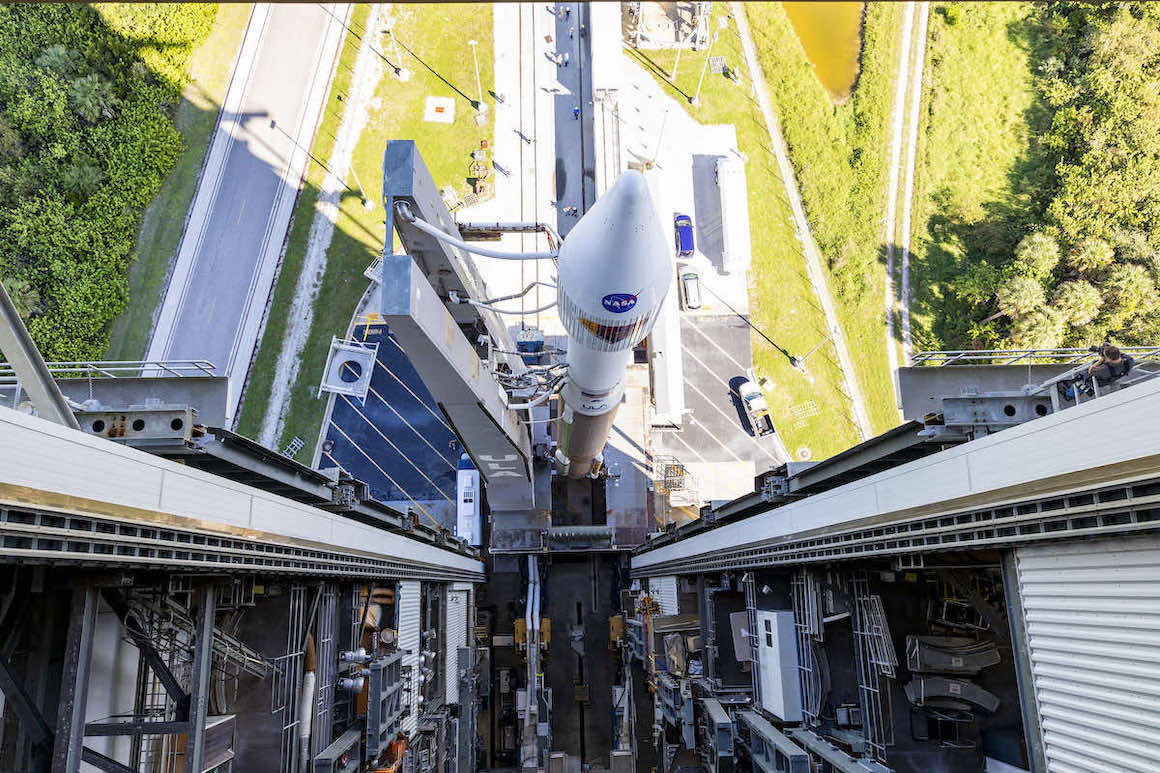
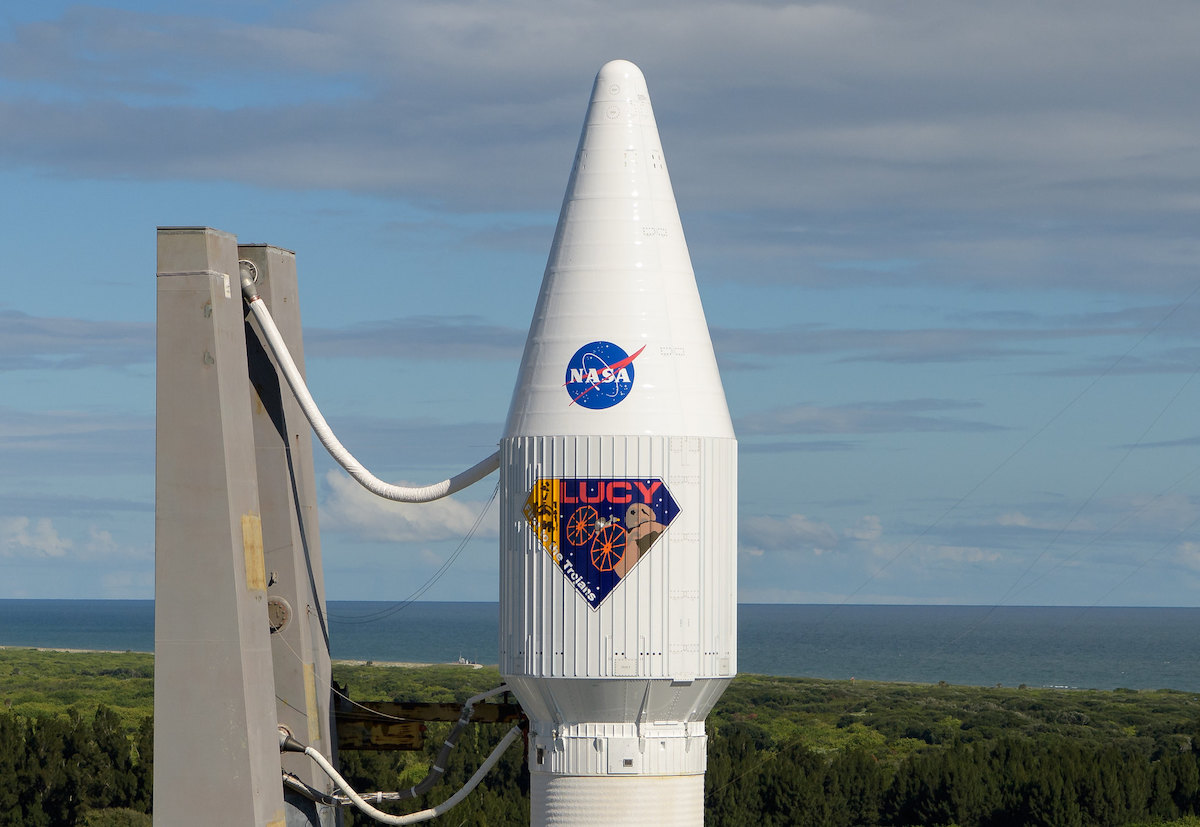
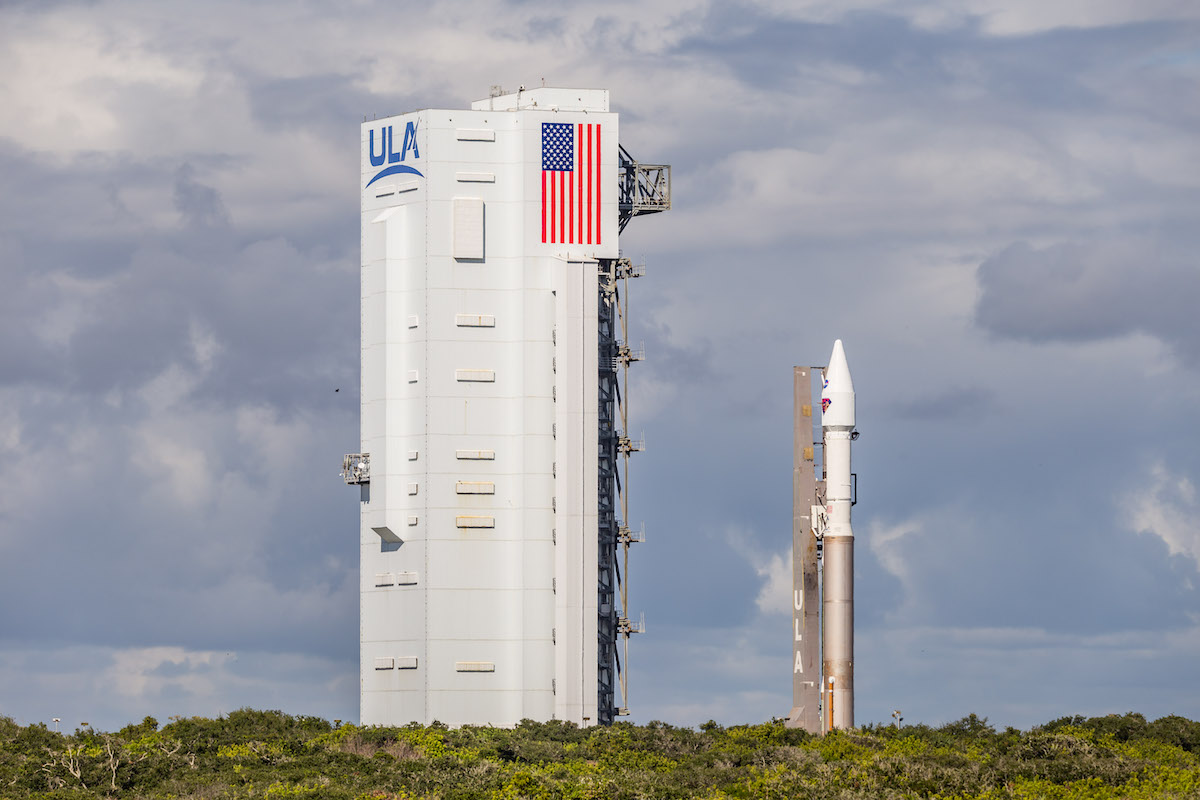
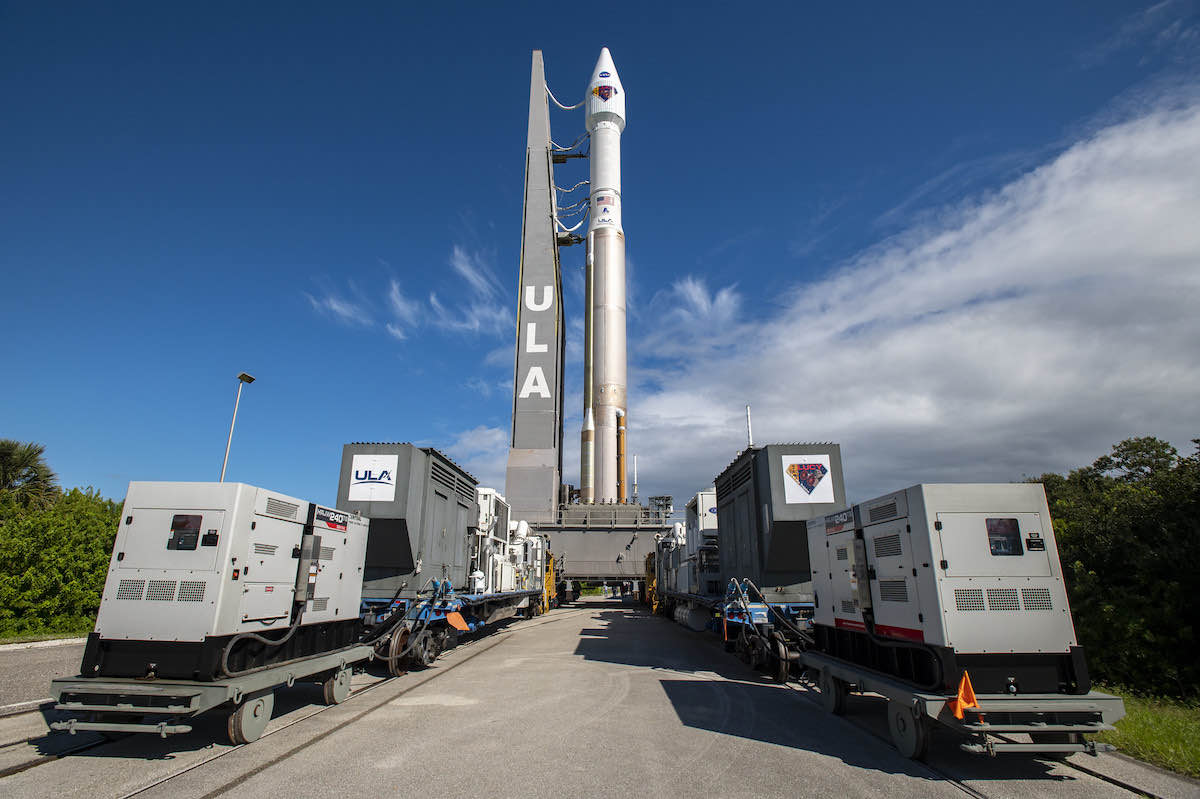
Quelle: SN
+++
Update: 10:00 MESZ
NASA’s Lucy mission is the first space mission to explore a diverse population of small bodies known as the Jupiter Trojan asteroids. These small bodies are remnants of our early solar system, now trapped on stable orbits associated with – but not close to – the giant planet Jupiter.
The Trojan asteroids are in two “swarms” that lead and follow Jupiter in its orbit around the Sun, and are almost as numerous as the objects in the Main Asteroid Belt. Over its 12-year primary mission, Lucy will explore a record breaking number of asteroids, flying by one main belt asteroid and seven Trojan asteroids.
The Lucy mission is named after the fossilized skeleton of an early hominin (pre-human ancestor) that was found in Ethiopia in 1974 and named “Lucy” by the team of paleontologists who discovered it. And just as the Lucy fossil provided unique insights into humanity’s evolution, the Lucy mission promises to revolutionize our knowledge of planetary origins and the formation of the Solar System.
The Lucy mission is a joint mission of NASA’s Goddard Spaceflight Center, the Southwest Research Institute and NASA’s Launch Services Program (LSP) based at Kennedy Space Center.

Eurybates and Queta (August 2027)
Lucy's first Trojan asteroid encounter will be with Eurybates, the biggest member (40 miles [64 km] in diameter) of the largest collisional family in the Trojans. Collisional families are groups of asteroids whose similar orbits indicate that they are likely all fragments resulting from a past catastrophic collision. Eurybates and its family members are doubly interesting because their spectroscopic classification (C-type) is shared by only 7% of Trojans. Lucy will be the first spacecraft to examine a large remnant of a known catastrophic collision.
Using the Hubble Space Telescope, the Lucy Team discovered in 2020 that Eurybates has a small moonlet. Less than a mile in diameter, the moonlet, named Queta, likely formed during the catastrophic collision. During the encounter, Lucy will fly close enough to Queta to open new opportunities to observe another tiny Trojan and at the same time meet all science goals at Eurybates.
Polymele (September 2027)
Polymele, also in the L4 swarm, has a diameter of approximately 15 miles (24 km) and a spectrum indicating it a P-type asteroid. Earth-based observations conducted by the Lucy science team determined that its rotational period is 6.1 hours.
Leucus (April 2028)
Leucus is a D-type asteroid in the L4 swarm with an effective diameter of 13 miles (20 km). It is particularly interesting because it has a very long rotational period (440 hr), as well as a highly elongated shape. It is football shaped with a long axis of 31 km and a short axis of 15 km.
Orus (November 2028)
Orus is a D-type asteroid in the L4 swarm with an approximate diameter of 38 miles (62 km). It is similar in size to Eurybates but is not associated with any known collisional family, giving Lucy the opportunity to compare and contrast objects of a similar size but different colors and collisional history. This will enable scientists to sort out the processes that affected these objects.
Patroclus and Menoetius (March 2033)
Patroclus and Menoetius are a near-equal binary system. Each component is about 60 miles (100 km) in average diameter and both orbit about a point in space roughly halfway between the two. Binaries like this are relatively rare in the Trojans but are very common in the Kuiper Belt (located beyond the orbit of Neptune), a fact that may prove to be an important link between these two very distantly separated populations of objects.
+++
Update: 11:15 MESZ















+++
12:00 MESZ






































+++
12:30 MESZ















Quelle: ULA, NASA
+++
13:10 MESZ
